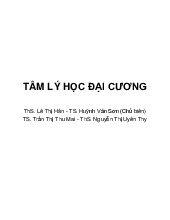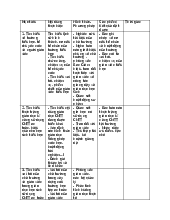


Preview text:
lOMoAR cPSD| 40367505
So sánh văn minh phương Đông và phương Tây cổ trung đại
I – So sánh điều kiện hình thành ( địa lý và cư dân ) Formation conditions
II – So sánh kinh tế ( economy)
1. Nông nghiệp ( agriculture )
2. Thủ công nghiệp ( craft industries )
3. Thương nghiệp ( trade )
III – So sánh về chính trị - xã hội ( politics – society )
IV – So sánh về thành tựu ( achievements ) Abstracts:
Civilization is the stage of human mental and material development, which is the advanced stage of culture.
In the East ( North Africa and Asia ), there were four big ancient civilization centers,
including Egypt; Mesopotamia; India and China. The East is the cradle of civilization,
where people first created writing, literature and other sciences.
Though Western civilization formed not as early as the Eastern, Greece and Rome, as
two first civilizations here, had legated a variety of invaluable achievements, which
still have influences on Europe and world’s every age.
These civilizations had many differences and some similarities parallelly.
Understanding those distinguishable and indistinguishable points is a key for us to
open a new large mysterious history horizon. This assignment will display
comparisons between eastern and western civilizations.
I – Forming conditions. 1. Eastern civilizations •
In the East, ancient civilizations were formed in the late fourth millennium BC
to the early fifth millennium BC along or associated with big rivers such as the
Chinese’s civilization was formed with Yangtze river, Yellow river; Egypt with
Nile; India with Ganges and Indus rivers; Meditonium with Tigre and Euphrate rivers. • Closed terrains •
This was the area with beneficial conditions of fertile alluvium, which was
favorable for developing food crops. • Few of minerals. •
People generated and made use of copper labor tools. lOMoAR cPSD| 40367505 •
Tropical monsoon climate was favorable for cultivation; agriculture and savory herbs production •
People gather crowded by tribes. 2. Western civilizations •
Western civilizations were formed later than the Eastern, in the early third
millennium along the Mediterranean. •
Open terrain → easy for seaway communication. •
Because of barren land; it was not as favorable for the western to plant food crops as the eastern. • Variety of minerals. •
People manufactured and used iron labor tools. •
Temperate climate was unfavorable for agricultural cultivation than the Eastern. II - Economy SIMILARITIES: •
They both have an economy going through the primitive manufacturing: clanship commune. •
They had to develop an economy based on natural conditions: enhancing
beneficial points from nature and minimizing natural disadvantages. Eastern Western Agriculture •
Rice agriculture was the major • Mainly plant economy wheat and •
Agriculture was the fundamentals industrial trees.
of every ancient Eastern nations’ • Develop not as economy. strongly as in the • Agriculture developed towards East
selfsufficiency → Delay industry
and trade ( except for Mesopotamia • Agriculture was to serve the market. lOMoAR cPSD| 40367505 Craft
People had been able to work in industry
many craft jobs with nations’ specifics. Trade




